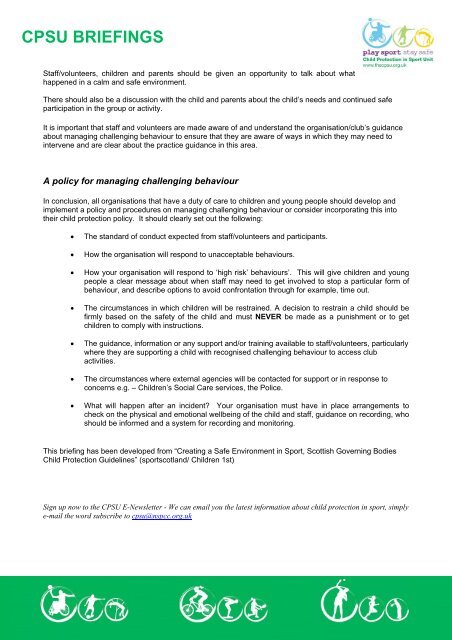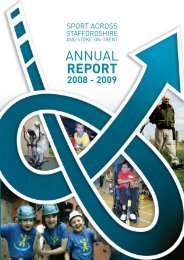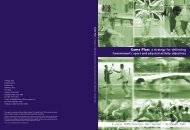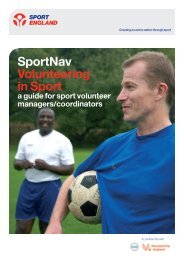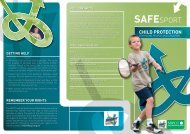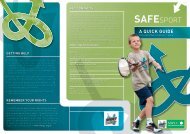Managing challenging behaviour guidelines (Child ... - GreaterSport
Managing challenging behaviour guidelines (Child ... - GreaterSport
Managing challenging behaviour guidelines (Child ... - GreaterSport
You also want an ePaper? Increase the reach of your titles
YUMPU automatically turns print PDFs into web optimized ePapers that Google loves.
CPSU BRIEFINGS<br />
Staff/volunteers, children and parents should be given an opportunity to talk about what<br />
happened in a calm and safe environment.<br />
There should also be a discussion with the child and parents about the child’s needs and continued safe<br />
participation in the group or activity.<br />
It is important that staff and volunteers are made aware of and understand the organisation/club’s guidance<br />
about managing <strong>challenging</strong> <strong>behaviour</strong> to ensure that they are aware of ways in which they may need to<br />
intervene and are clear about the practice guidance in this area.<br />
A policy for managing <strong>challenging</strong> <strong>behaviour</strong><br />
In conclusion, all organisations that have a duty of care to children and young people should develop and<br />
implement a policy and procedures on managing <strong>challenging</strong> <strong>behaviour</strong> or consider incorporating this into<br />
their child protection policy. It should clearly set out the following:<br />
• The standard of conduct expected from staff/volunteers and participants.<br />
• How the organisation will respond to unacceptable <strong>behaviour</strong>s.<br />
• How your organisation will respond to ‘high risk’ <strong>behaviour</strong>s’. This will give children and young<br />
people a clear message about when staff may need to get involved to stop a particular form of<br />
<strong>behaviour</strong>, and describe options to avoid confrontation through for example, time out.<br />
• The circumstances in which children will be restrained. A decision to restrain a child should be<br />
firmly based on the safety of the child and must NEVER be made as a punishment or to get<br />
children to comply with instructions.<br />
• The guidance, information or any support and/or training available to staff/volunteers, particularly<br />
where they are supporting a child with recognised <strong>challenging</strong> <strong>behaviour</strong> to access club<br />
activities.<br />
• The circumstances where external agencies will be contacted for support or in response to<br />
concerns e.g. – <strong>Child</strong>ren’s Social Care services, the Police.<br />
• What will happen after an incident? Your organisation must have in place arrangements to<br />
check on the physical and emotional wellbeing of the child and staff, guidance on recording, who<br />
should be informed and a system for recording and monitoring.<br />
This briefing has been developed from “Creating a Safe Environment in Sport, Scottish Governing Bodies<br />
<strong>Child</strong> Protection Guidelines” (sportscotland/ <strong>Child</strong>ren 1st)<br />
Sign up now to the CPSU E-Newsletter - We can email you the latest information about child protection in sport, simply<br />
e-mail the word subscribe to cpsu@nspcc.org.uk


